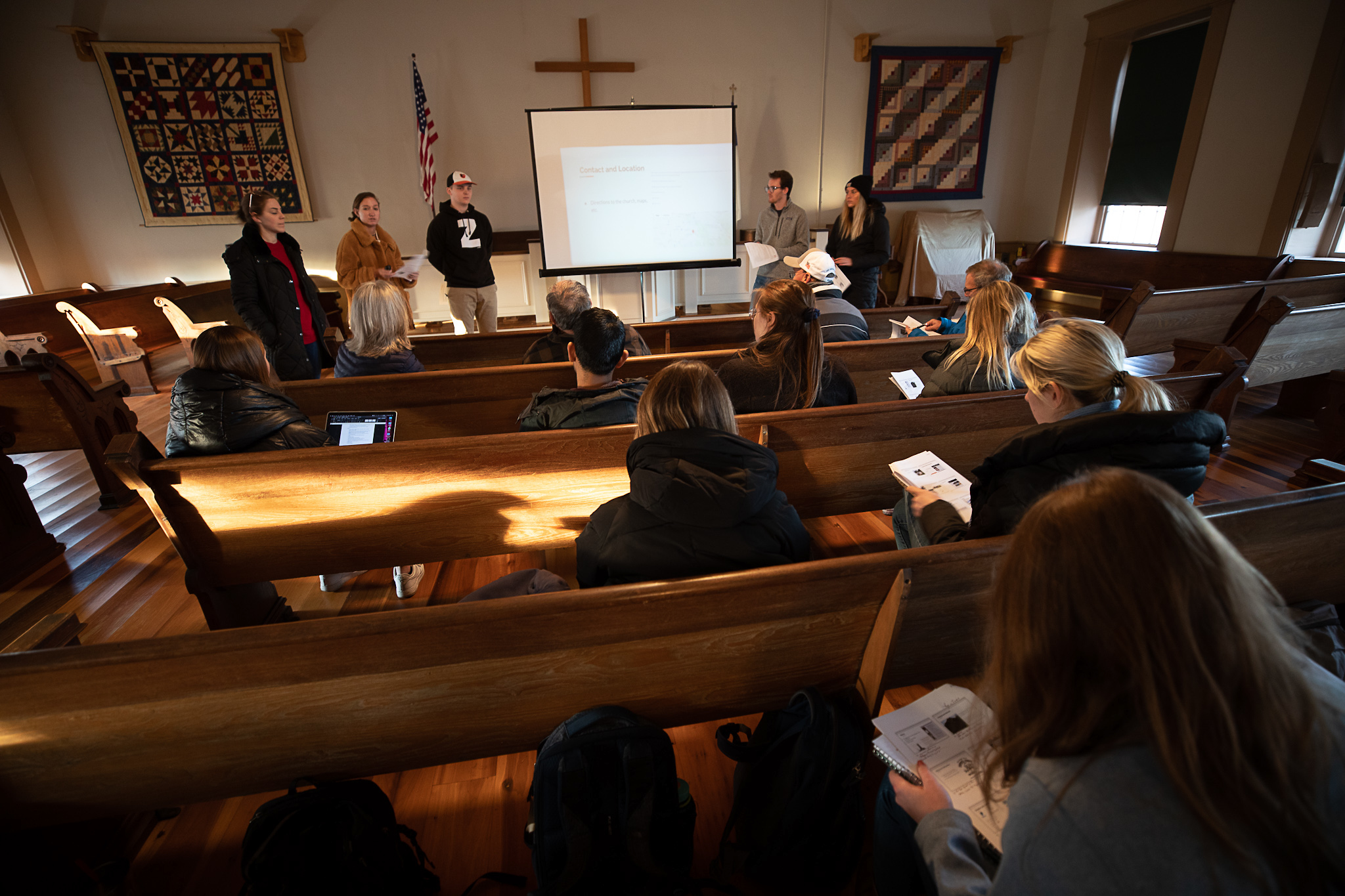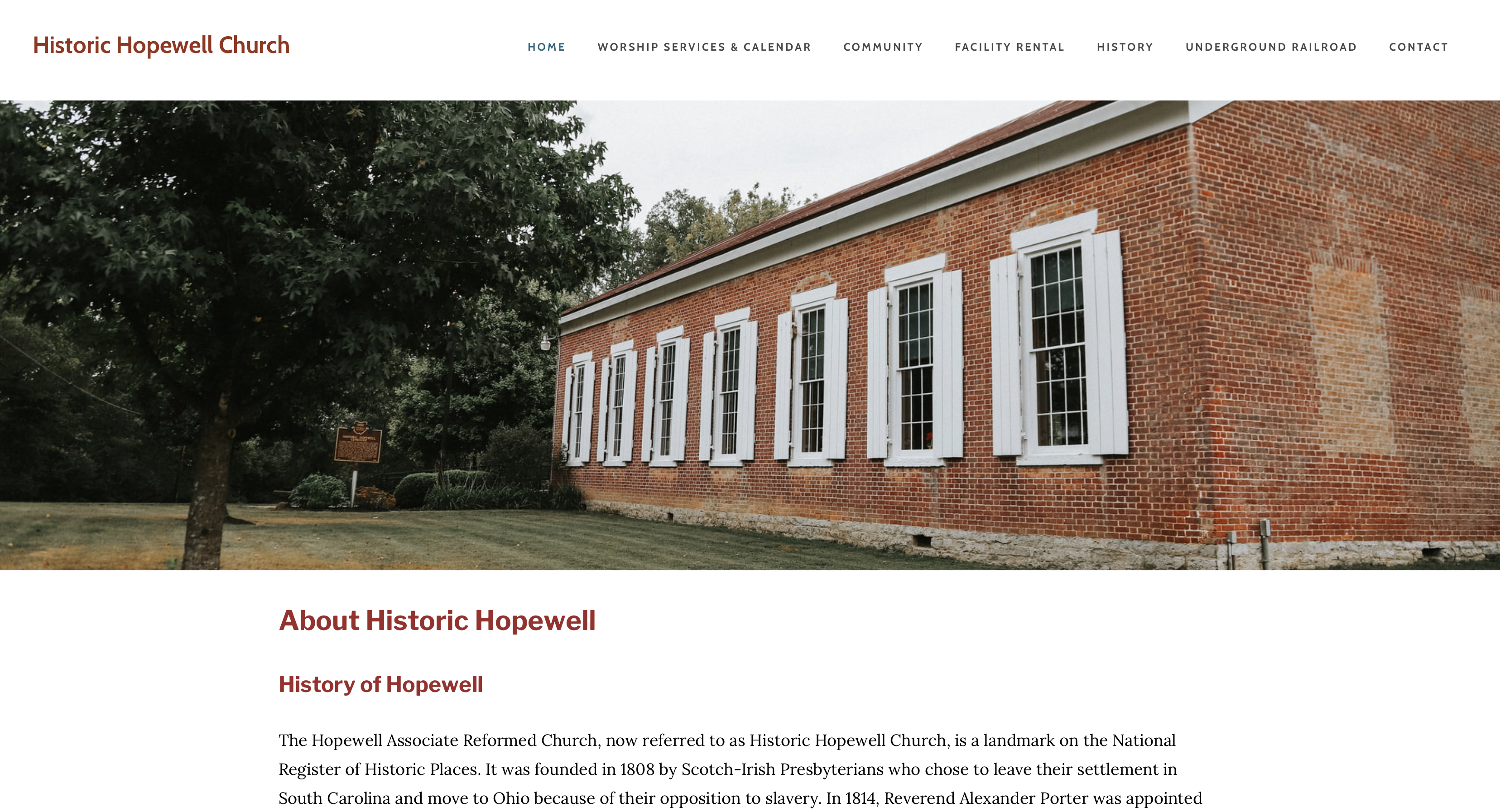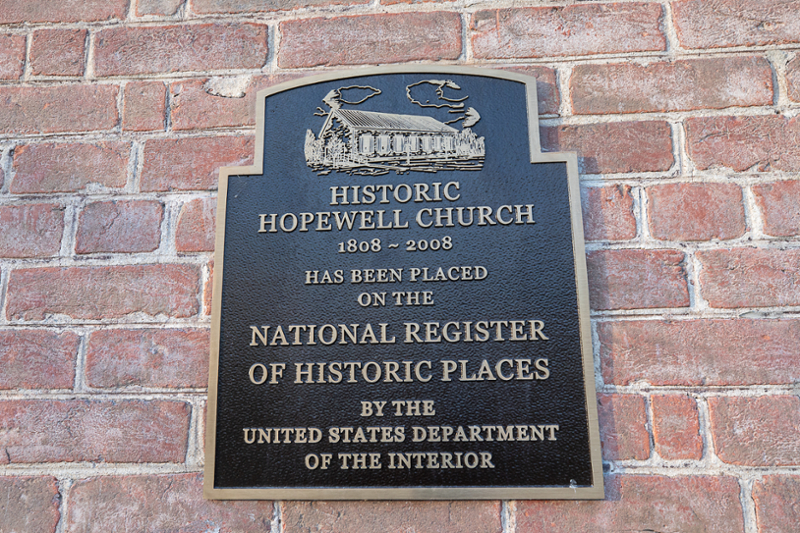
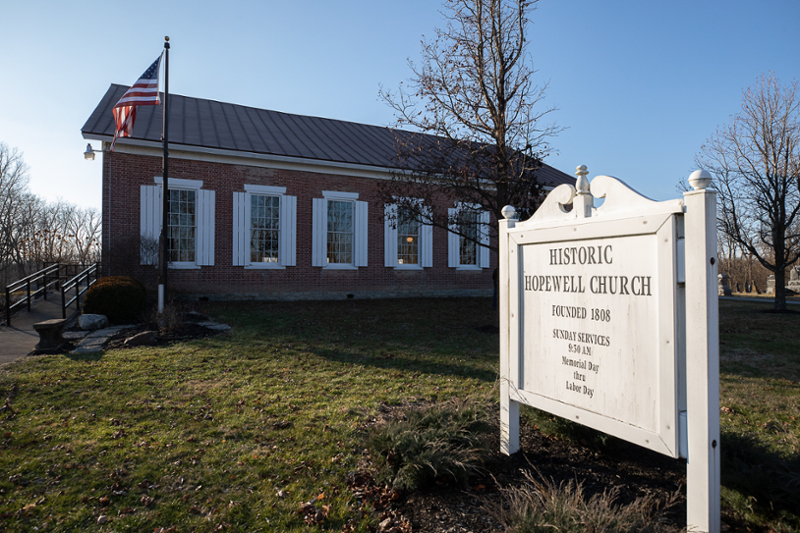
The road to freedom through southwest Cincinnati: Student project highlights region’s Underground Railroad ties
A message from the class:
By Shavon Anderson, university communications and marketing
Hidden on a quiet country road five miles from Oxford, the Historic Hopewell Church straddles Butler and Preble counties in College Corner Township. On a typical summer Sunday, sounds of worship stream from its stained-glass windows and float across the rural community of fewer than 500.
The church’s grounds, which include a cemetery, are discreet, aside from a simple white sign marking the main entrance. By the front door hangs a bolted bronze marker: “National Register of Historic Places" — a nod to the church’s long and significant history helping thousands of slaves find freedom.
“I’ve been an Oxford resident for 15 years now, and even I wasn’t aware of the deep history we have here,” said Heidi McKee, professor of professional writing at Miami University.
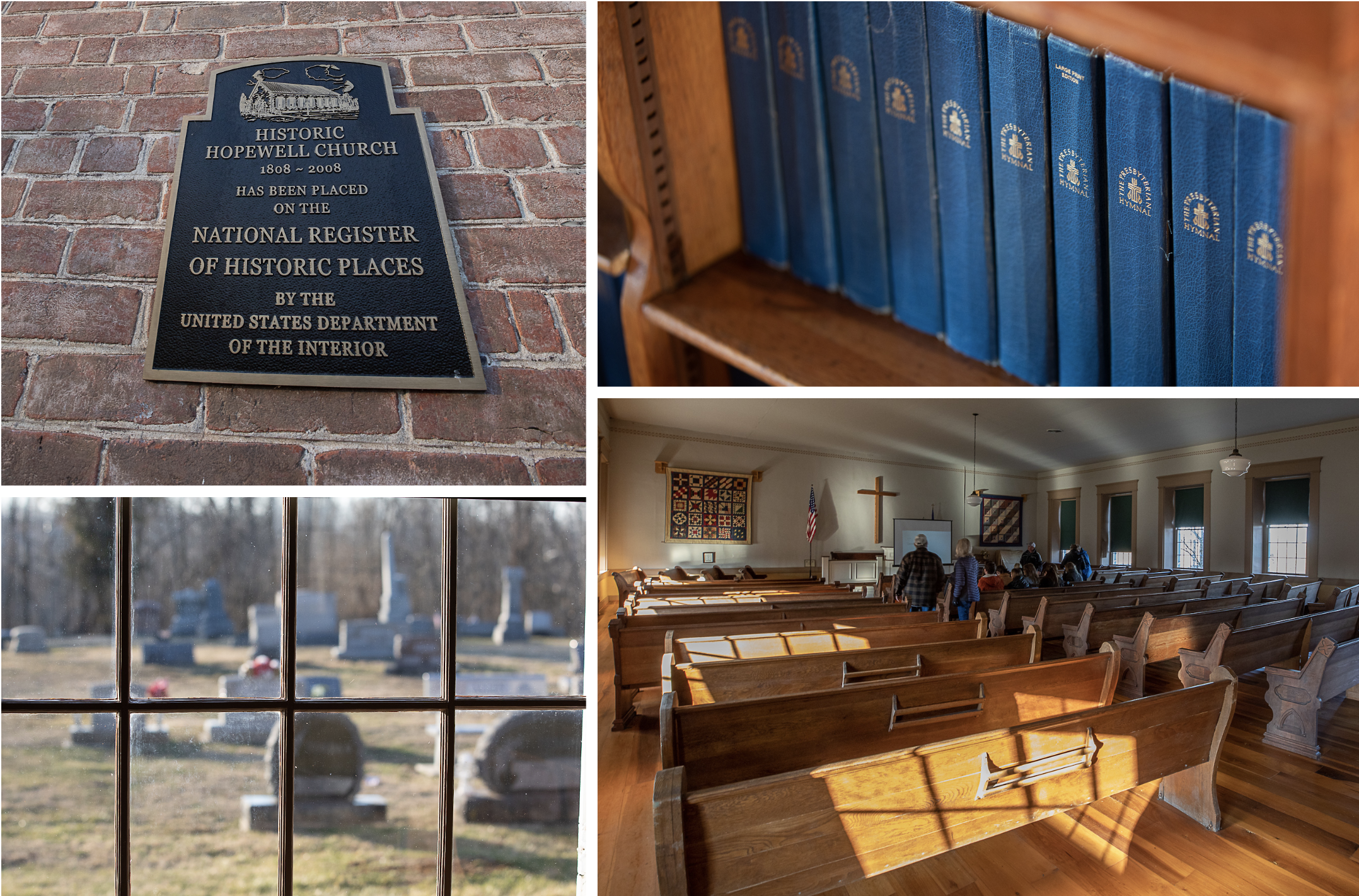
Interior and exterior of the church (all photos by Jeff Sabo).
The fact that many people don't know the area's history or about the Historic Hopewell Church (HHC) sparked Gary Salmon, the church's secretary, to reach out to McKee. Salmon's great-grandfather was the last session leader of the church, and much of his extended family lay in its cemetery. When he discovered that McKee’s class created a website for nearby Reily Township, he asked for her help.
McKee crafted a capstone project for senior professional writing majors and minors to create a new website and brochure for the church — researched, designed and written entirely by students — to serve as a history hub in addition to developing marketing materials for distribution.
For the class and the community, it was a chance to learn that one of the region’s most impactful sites sits less than 15 miles from Miami’s Oxford campus. To gain a foundation for the project, McKee took students to Cincinnati’s National Underground Railroad Freedom Center to uncover the city’s significance on the Underground Railroad as escaped slaves traveled the Ohio River to the north.
“Let me ask you a question,” said Robert Dye, a museum guide. “How many of you, if you would have been a slave, would try to escape?”
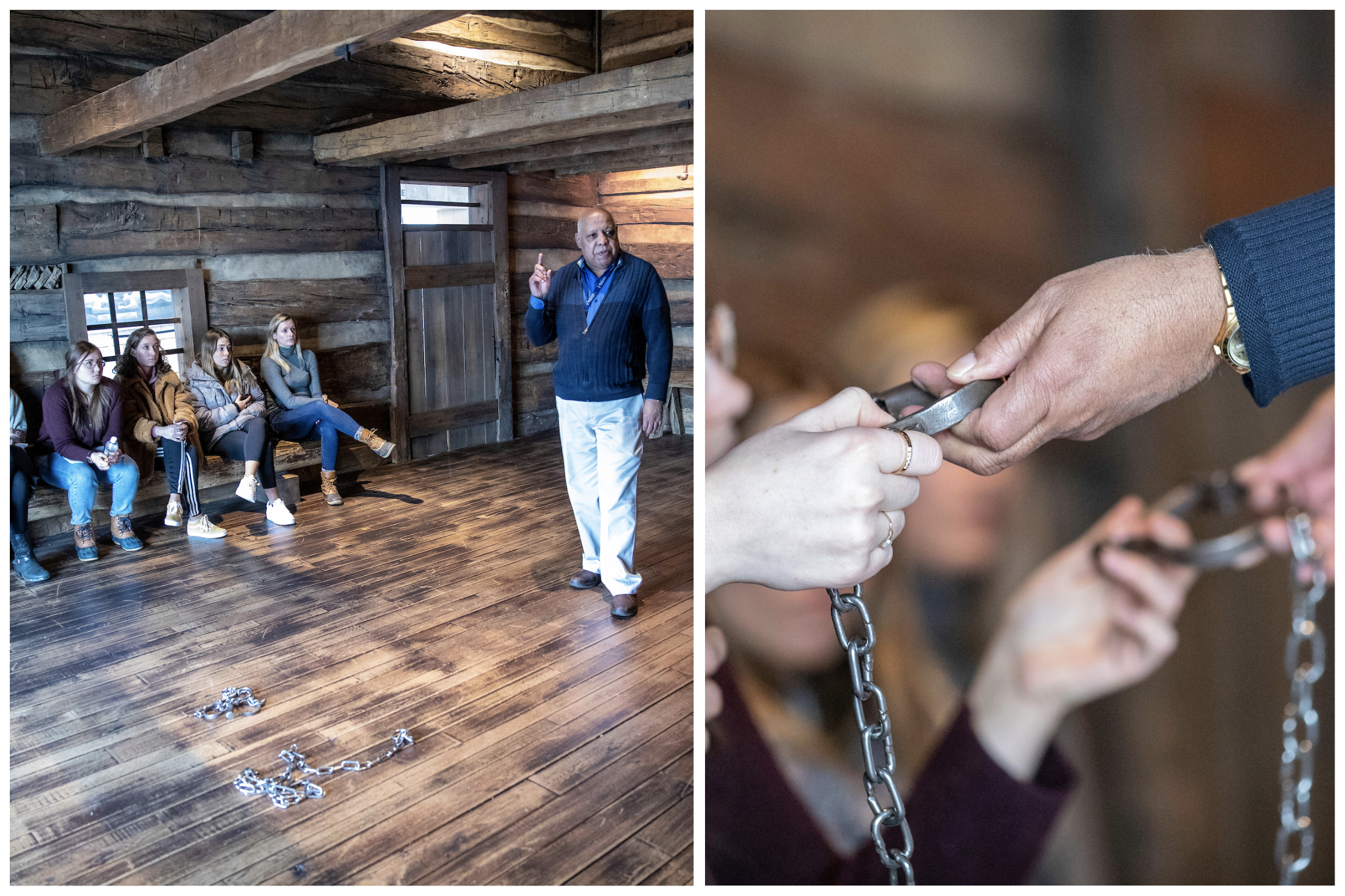
Museum guide Robert Dye passes around authentic shackles for Miami students to handle (photos by Jeff Sabo).
It seemed like an easy answer before now. But as the group gathered in an original 1800s slave pen on the museum’s second floor, they confronted raw American history like never before.
“I’m from Cincinnati, and I had no idea of its Civil War ties,” said Arnav Damodhar, a Miami senior.
While Dye passed around authentic iron shackles, the chains echoed in the cramped cabin as they slipped through the hands of Miami students. When they landed with him, Damodhar sighed and sat with the weight of history at his fingertips.
A stop on the path to freedom
Inside the Historic Hopewell Church, wooden pews line the sanctuary, and yellowed newspaper clippings feature ongoing restoration efforts funded by dues from its current congregation.
The story goes something like this: Abolitionists arrived from South Carolina in the early 1800s and founded the HHC in 1808. Throughout the 1820s, members recruited other churches to condemn slavery and used the nearby Four Mile Creek as a pass-through point on the Underground Railroad.
“For any members who wanted to join [the church], they had to go back to South Carolina, buy back their slaves and free them before moving to the community,” said Jane Marsh (Miami ’20).
“Members helped many slaves get to Canada,” said Jordan Gilligan (Miami ’20). Gilligan served as the main writer for the site's Underground Railroad page. “Being on campus right down the road, it’s important for us to understand Oxford is more than Miami. The challenge was bringing that history to younger generations in a unique way.”
Students present project ideas to church trustees during an initial tour and meeting (photo by Jeff Sabo).
Through initial research and development, expertise came from trustees with deep ties to the church. Bob Simpson, vice president and resident genealogist, tracks his roots to his great-great-grandfather, Reverend Porter, the church’s first official pastor. With the site, Simpson wanted a place for people to connect their familial dots.
“You’re talking about people from California, Iowa, Idaho, wanting to be able to see pictures of the church and cemetery, learn about their ancestors and purchase books and items we create,” he said.
For McKee, the partnership between students, residents and trustees highlights the importance of community-based projects. Securing a grant through Miami’s Center for Career Exploration and Success, the funding fueled experiential learning. Through interviews with local officials and historians, trips to museums and conversations with families, students learn collaboration through user-centered design.
“This class develops skills and knowledge that students will be able to apply after graduation,” she said. “Project management, content strategy and creation come from studying real-world topics in which students decide which way to craft their final product.”
There’s also a major benefit to learning outside the classroom.
“I’ve done client projects before but never to the point where we’re immersing ourselves in what we’re doing,” Marsh said. “You can give us a project, and we’ll do it. But going to the site, meeting people and learning the history makes it much more impactful.”
As spring break approached, students prepared to move into the next phase of site development. But days after the class’s March trip to the Cincinnati Freedom Center, coronavirus surged nationwide, and Miami announced the move to remote classes.
Shifting course and shaping history
As Salmon and the other HHC trustees watched the news unfold, they questioned the reality of a completed website.
“The university started closing down, and in my mind, I’m thinking, ‘How is this going to work?’” Salmon said. “At that point, the students couldn’t communicate with us face-to-face.”
Meanwhile, students struggled to grasp their new reality.
“Not only were we trying to finish classes and decide whether to go home, we had to wrap our minds around the fact that this was our last semester as seniors,” said Allie Durkee (Miami ’20).
With a month left, McKee tried to maintain normalcy. But the class still had to conduct the site’s user testing and coordinate with trustees to finalize design and content.
“We motivated each other to keep going,” Gilligan said. “Maintaining deadlines and being innovative, it was important for us to take ownership and deliver what we promised.”
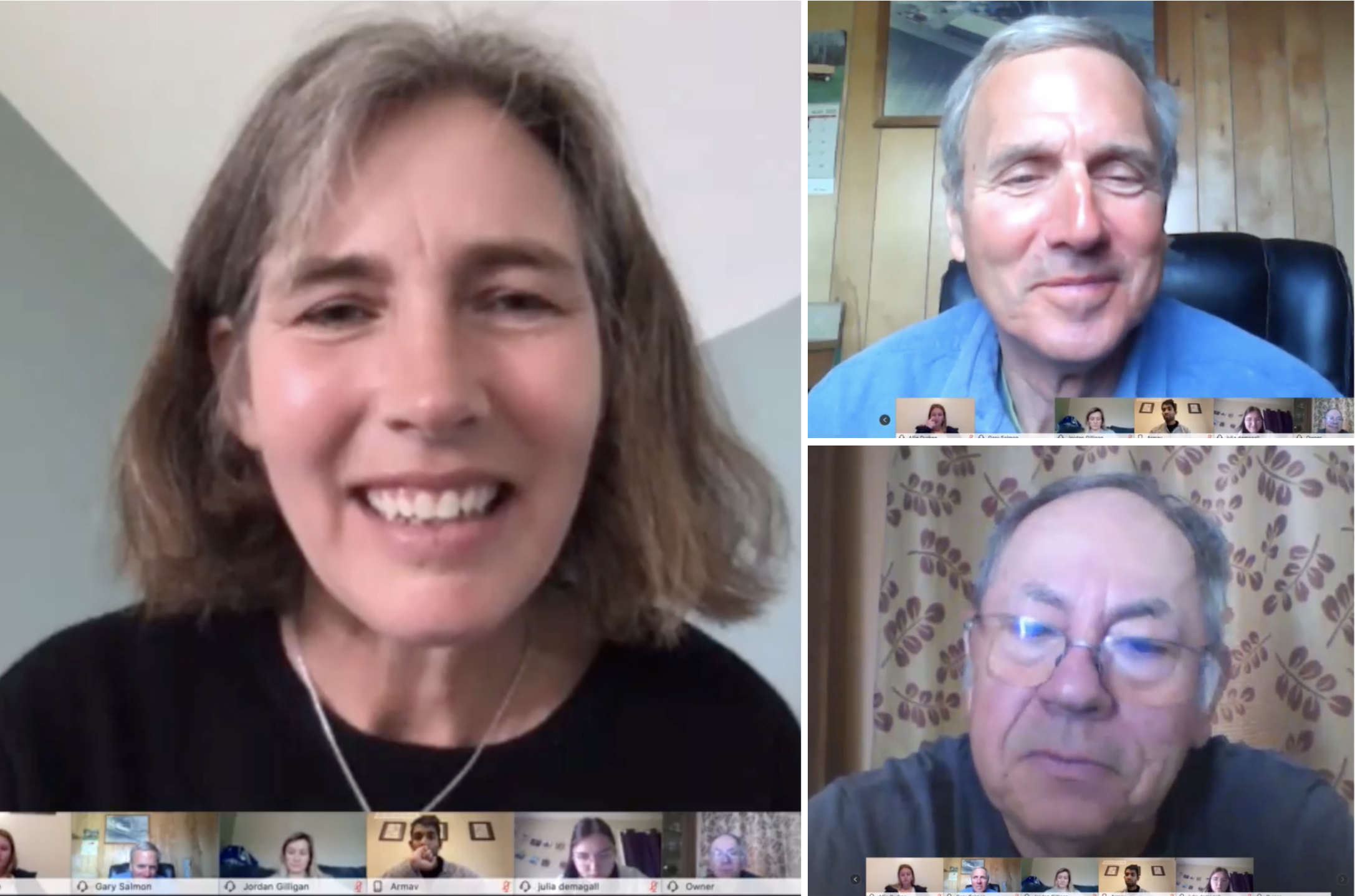
Heidi McKee and trustees Bob Simpson and Gary Salmon meet with a few Miami students via Webex.
The class arranged to meet with past and present HHC trustees in Webex, teaching them how to use the online video platform for meetings as McKee simultaneously worked to get her own students comfortable with the new technology.
User testing – which was supposed to be in Oxford through in-person meetings with more than 300 community members – moved online and forced students to overhaul their process and goals. Students used an online project management platform to help them on track and an online survey system to conduct user testing and get user feedback on drafts.
A week before Miami’s virtual May commencement, a handful of students, along with Salmon and Simpson, gathered on Webex one last time to reflect on the semester after presenting their final project.
“What the students showed us,” said Salmon, “I couldn’t be more proud.”
The completed site not only includes the church’s extensive history but has pages for visitors to explore the grounds through photos, support the church’s ongoing restoration projects and access their worship services and community events. The brochure will be printed and distributed at area hotels and visitor bureaus.
A screenshot from the completed class website.
With a student-created user manual for website updates, trustees are able to easily maintain the new platform.
It wasn’t the ending the Miami seniors planned but one they rallied to create for themselves. As most of McKee’s class heads to graduate school or launches their professional careers, their work will have an enduring impact on the university and local communities, inviting us all to explore more of southwest Ohio's history and role in the Underground Railroad.

